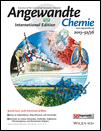150 Years of Bayer: Success through Science-Based Innovation
This year sees Bayer celebrate its 150th anniversary. We can look back on a long and very successful history as an innovation company. What started as a small dyestuffs factory in the Barmen district of Wuppertal is now a global enterprise with more than 110 000 employees. Time and time again over the past 150 years, Bayer inventions have helped improve our quality of life. This great tradition is our commitment to the future and is entirely in line with our mission statement “Bayer: Science For A Better Life”.1

150 years of Bayer: an anniversary like this instantly brings to mind words such as tradition and continuity. However, Bayer can actually look back on 150 years of ongoing change and renewal. A company cannot exist in the long term without changing and adapting. Thanks to our innovative strength and our ability to adapt constantly to market changes, Bayer now holds leading positions in all its business areas. The spirit of inventiveness and the will to succeed span the company’s history from its origins 150 years ago to the present.
Our exceptionally strong innovation culture is particularly important. As an inventor company, we are committed to science-based innovation. The second key factor is our systematic approach to innovation. We set ourselves clear goals and priorities, and are prepared to use the resources required, but we also have the courage to halt projects quickly if this is necessary. Thirdly, scientists are keen to work for Bayer and remain loyal to the company. We offer an environment in which young scientists can tread their own path, based on the tradition and expertise of previous generations.
Last but not least, we are willing and able to enter into innovation partnerships to complement our own attributes. After all, science generally starts at universities and other research institutes. For a company such as Bayer, the focus is on two aspects for all partnerships. Expertise needs to be shared in both directions and collaborations need to be reviewed at all stages of the value-added chain. This is the only way we can use a genuine “open innovation” concept to harness all the opportunities inside and outside the company and transform ideas into innovations. At Bayer, we pursue many different strategies, such as:
- 1
A strategic alliance for long-term collaboration has been in place for a number of years with the German Cancer Research Center in Heidelberg.
- 2
We have established an innovation incubator in San Francisco. With this “CoLaborator”, we provide laboratory space and expertise at our facilities for start-up companies from the life-sciences sector.
- 3
The buzzword “crowdsourcing” is embraced at Bayer HealthCare with the Grants4Targets initiative in biology and the Grants4Leads initiative in the field of chemistry. New innovative ideas for therapeutic approaches reach us via an internet platform.
- 4
One example of precompetitive consortia is the European Innovative Medicines Initiative of the EU and European Federation of Pharmaceutical Industries and Associations (EFPIA).
- 5
“Inside-out” concepts are a further strategy for sharing risks, particularly in pharmaceutical research. Our oral, direct factor Xa inhibitor rivaroxaban (Xarelto) has been developed successfully for patients thanks to a partnership with Johnson & Johnson in the development phase. And the former Bayer anti-infectives unit, now AiCuris, shows that conventional spin-offs can also be a great success.
Here at Bayer, and also in collaboration with our partners, we have spent many decades laying the foundations to achieve these goals, and in doing so, have developed a unique understanding of the life sciences, which for us means human, animal, and plant health. We are also the only global company to combine these three sectors under one roof.
A number of examples from Bayer’s history show that a transfer of products or concepts between these sectors can be very successful:
Imidacloprid was developed initially as a crop protection agent to control chewing and sucking pests such as aphids. The research scientists from the Animal Health Division then developed it further for use with animals to combat fleas and ticks. Ciprobay, which is a member of the class of fluoroquinolones, is a broad-spectrum antibiotic for treating a wide range of infections in humans. As its manufacture made this class of substances easily accessible, it was also possible to launch a similar substance, namely Baytril, for use with livestock. Another example is Canesten, which is used to treat fungal skin infections in humans and contains an azole as an active ingredient. This is the same class of active ingredient as for our fungicide Folicur, which is used, for example, to protect soybeans against the harmful soybean rust fungus.
In the future, we aim to systematically explore the potential for new products at the interfaces between these areas. Thanks to significant advances in molecular biology over the past 10 to 15 years, above all in data acquisition and evaluation, we are constantly making new discoveries about the fundamental mechanisms of cells in humans, animals, and plants. And these mechanisms can be very similar across different species.
This provides us with the basis to influence certain similar mechanisms, for instance, in energy metabolism, to achieve the desired effects in humans, animals, and plants. Let us consider the interaction between host organisms and microorganisms that have a positive impact on the host. Two examples of such interaction are between humans and bacteria that aid digestion, and between plants and soil bacteria that protect roots against fungal attack.
In order to put the similarities across different species to better use, it would be conceivable to use the signaling pathways between the organisms to positively influence human, animal and plant health, for example, through the targeted administration of signaling substances. This is the approach we intend to take and we have therefore made it possible for our research teams to work systematically and closely together on innovations, beyond the confines of the subgroups. These projects are still largely at a basic research stage and are therefore being driven forward in close collaboration with partners from universities.
The key needs for society are not only health and nutrition, but also energy, resources, and safety. Bayer is working on sustainable solutions to meet these challenges, because our prosperity must not come at the expense of an environment worth living in. Improvements to production processes are therefore one of the most important keys to greater sustainability. Only by significantly improving production processes or adopting completely new approaches, can the resource efficiency be boosted. One example is the use of carbon dioxide as a raw material for polyurethanes with the help of innovative catalysts.
Without science, that is, without research and development, the current global challenges will not be met. Innovation safeguards the future, and not just of companies such as Bayer, but also, in more global terms, of the planet’s entire population. But there are prerequisites for innovation: It is not just a question of money, but is only possible if people have the necessary ideas and passion. Innovation requires curiosity along with an enthusiasm for change and continuous improvement.
This is something that needs to be taught and encouraged. Good training is therefore essential for each and every center of innovation. But in order to ensure that both our company and our society remain successful, we must continue to work on ensuring that society as a whole appreciates the value of innovation. Bayer is committed to developing innovative products and solutions that make real improvements to our lives. Bayer has around 13 000 employees in research and development. Each year, we invest over three billion Euros throughout the group in researching and developing products and solutions, or, to put it another way, in our innovation capabilities. This, and this alone, will safeguard our future.




